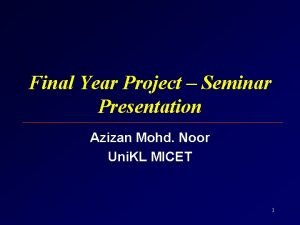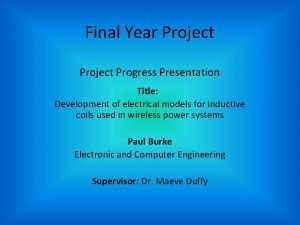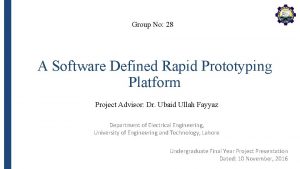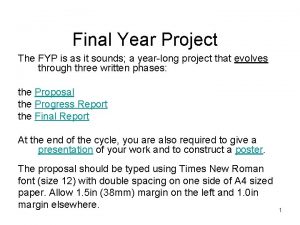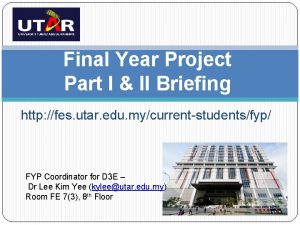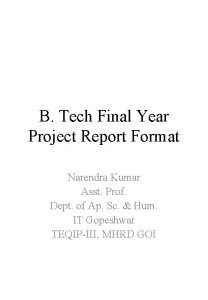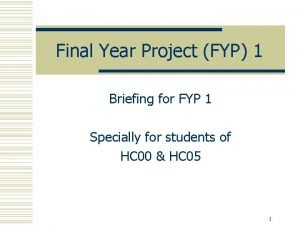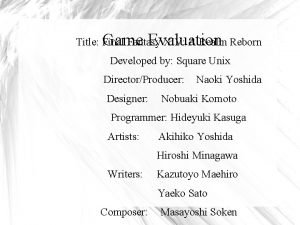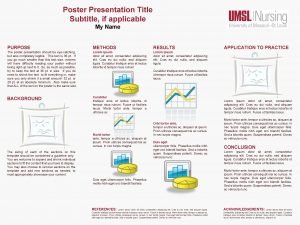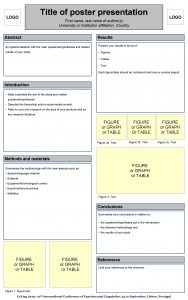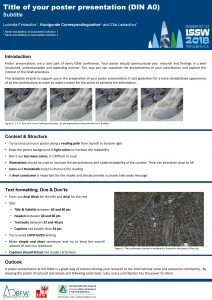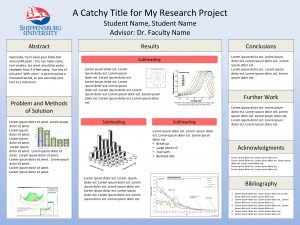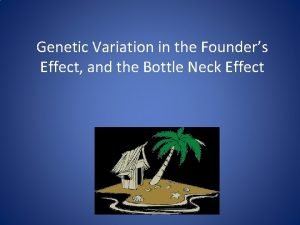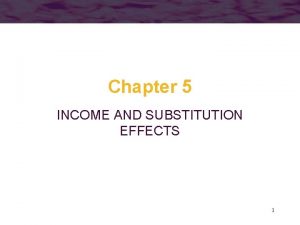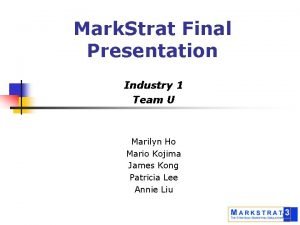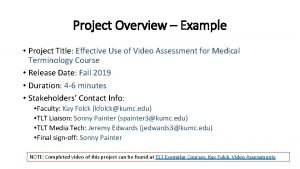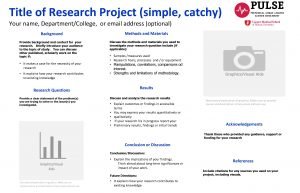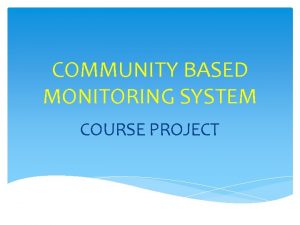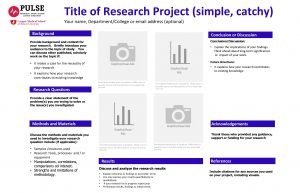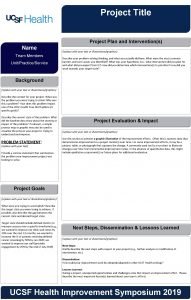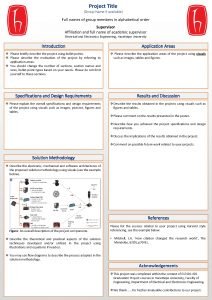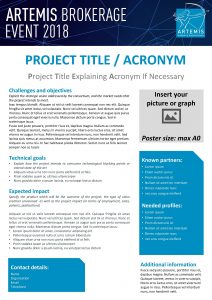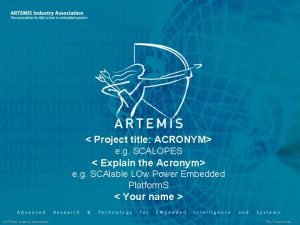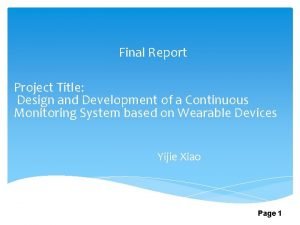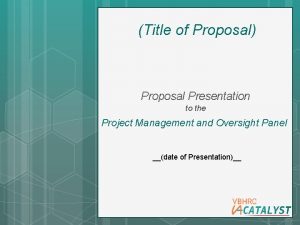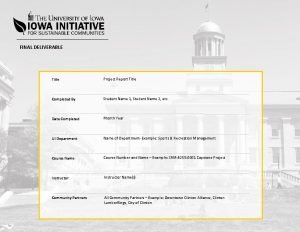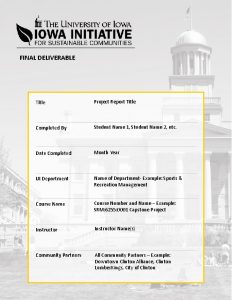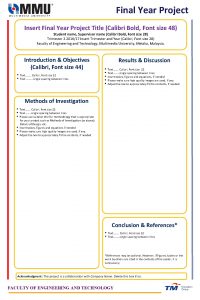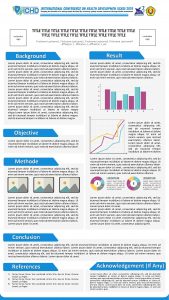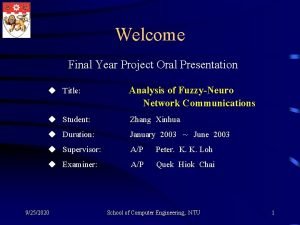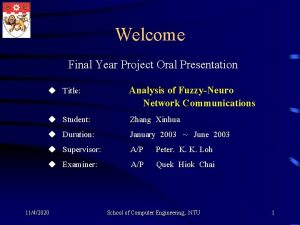Final Year Project Final presentation Title Effect of

















































![8. References [1] M. H. Shwehdi, “Computation of lightning flashovers and backflashover voltage levels 8. References [1] M. H. Shwehdi, “Computation of lightning flashovers and backflashover voltage levels](https://slidetodoc.com/presentation_image_h2/28995ff3c51ac029153ee0a8df27a62b/image-50.jpg)
![8. References [9] O. Kastrup, A. Nigri & P. Maldonado, “Lightning performance assessment with 8. References [9] O. Kastrup, A. Nigri & P. Maldonado, “Lightning performance assessment with](https://slidetodoc.com/presentation_image_h2/28995ff3c51ac029153ee0a8df27a62b/image-51.jpg)


- Slides: 53

Final Year Project – Final presentation Title: Effect of tower footing resistance on the effectiveness of externally gapped line arrester in providing overhead line protection against lightning strokes Name: Lo Pak Ngai Edmond Student ID: 14074489 D Project ID: FYP_70 Supervisor: Dr. Bu, Si Qi

Outline 1. Introduction 2. Objectives 3. Background 4. Methodologies 5. Results & Discussions 6. Conclusion & Recommendations 7. Way Forward 8. References

1. Introduction Lightning: Ø An electric discharge in the form of stroke or flash Ø One of the important problems for insulation design Ø Adversely affect OHL performance for power transmission

1. Introduction Lightning failure: 1. Shielding Failure 2. Back Flashover Total failure rate: Shielding failure rate Back flashover rate Total failure rate

1. Introduction Measures for improving OHL lightning performance: 1. Reduction in tower footing resistance 2. Smaller shielding angle 3. Installation of additional shield wire

1. Introduction Line arrester Most cost-effective way to improve OHL performance Typical LA Externally gapped LA

2. Objectives • To correlate the lightning flashover rate in terms of shielding failure with different phases of line arresters. • To correlate the lightning flashover rate in terms of back flashover with different phases of line arresters under the effect of varying tower footing resistance.

3. Background Top phase is most vulnerable to shielding failure Bottom phase is most vulnerable to back flashover 4 D 10 Transmission tower

3. Background – Coupling Effect The smaller the distance between SW and phase conductor (i. e. h 1 – h 2, h 1 – h 3, h 1 – h 4) The higher induced surge voltage on phase conductor The lower the flashover rate Phase conductor Top phase Middle phase Bottom phase Coupling effect 1 st 2 nd 3 rd Probability of back flashover 3 rd 2 nd 1 st

4. Methodologies Shielding Failure Analysis Steps: 1. Define arcing distance(Larcing) and arcing horn gap length (Lgap) 4 D 10 Tower Larcing 4. 4 m Lgap 3. 3 m

4. Methodologies ■

4. Methodologies ■

4. Methodologies ■

4. Methodologies Back Flashover Analysis Modelling Back Flashover analysis Simulation

4. Methodologies Modelling: Transmission line and tower model Tower footing resistance model Lightning current source model Line arrester model

4. Methodologies Transmission line and tower model Exterior configuration Interior configuration

4. Methodologies Flashover switch 5 phases in total Tower surge impedance = 120 Ω

4. Methodologies Phase conductor: 4 in bundle

4. Methodologies Span of 3 towers

4. Methodologies Tower footing resistance model Rf: 5 – 50 Ω, interval of 5Ω

4. Methodologies Lightning current source model Lightning current amplitude 20, 40, 70, 100 & 130 k. A Lightning current Model Front time/ Tail time 2/ 70 µs Waveform in EMTP-RV

4. Methodologies Line arrester model Interior configuration of Zn. O line arrester Gapped line arrester

4. Methodologies Simulation: Steps: 1. Run 2. Show graphs with aid of Scope. View

4. Methodologies 3. Superimpose waveforms for comparison Branch current waveforms of tower 1

4. Methodologies 4. Determination of phase(s) suffering from back flashover If tower induced voltage > CFO (i. e. 1848 V), back flashover occurs.

5. Results & Discussions Shielding Failure Analysis

5. Results & Discussion 2. Calculate exposed distance (Dc) Dc ≠ 0 for middle phase when lightning current = 3 k. A

5. Results & Discussion 2. Calculate exposed distance (Dc) Dc = 0 for middle phase when lightning current = 11 k. A

5. Results & Discussion 3. Calculate shielding failure (SF) rate and probability of suffering from SF under different phases and lightning current values

5. Results & Discussion 4. Findings Comparison among shield wire and 3 phases 1. Shield wire has highest SF rate and probability of suffering from SF.

5. Results & Discussion 4. Findings Comparison among 3 phases only (i. e. top, middle & low phase) 1. Top phase has highest SF rate, with middle phase 2 nd and low phase 3 rd. 2. Middle phase has highest probability of SF, with top phase 2 nd and low phase 3 rd.

5. Results & Discussion 4. Findings Top phase Middle phase Low phase 13. 5 k. A 11 k. A 4. 5 k. A

5. Results & Discussion Back Flashover Analysis 1. Lightning Surge Performance under Different Lightning Current Amplitudes Back flashover performance with varying lightning current amplitude Lightning current (k. A) Tower 1 (Rf = 20 Ω) Tower 2 (Rf = 20 Ω) Tower 3 (Rf = 20 Ω) Top phase Middle phase Bottom phase 20 X X O X X X 40 X X O X X X 70 X X O X X X 100 X X O O X X O 130 O O O O O: Back flashover occurs X: Back flashover does not occur

5. Results & Discussion

5. Results & Discussion Findings: 1. Bottom phase has the highest probability to suffer from BF, with middle phase 2 nd and top phase 3 rd. Probability of suffering from back flashover among three phases Phase conductor Ranking Top phase 3 rd Middle phase 2 nd Bottom phase 1 st (1 st = highest probability, 3 rd = lowest probability) 2. lightning current, tower induced voltage and no. of phase conductor suffer from BF.

5. Results & Discussion 2. Effect of Tower Footing Resistance on Back Flashover Voltage Back flashover performance with varying tower footing resistance Rf(Ω) Lightning current = 20, 40 k. A 70 k. A 100 k. A 130 k. A Up Middle Low 5 X X O 10 X X O 15 X X O 20 X X O O 25 X X O X O O O 30 X X O O O O 35 X X O O O O O 40 X X O O O O O 45 X X O O O O O 50 X X O O O: Back flashover occurs X: Back flashover does not occur

5. Results & Discussion

5. Results & Discussion Findings: tower footing resistance(Rf), R f, tower induced voltage. no. of phase conductor suffer from BF.

5. Results & Discussion Findings: lightning current amplitude, Rf that could trigger BF. Bottom phase conductor suffer from BF with smallest Rf, with middle phase 2 nd and top phase 3 rd. Minimum Rf that trigger back flashover among 3 phases Phase conductor Lightning current 20 k. A 40 k. A 70 k. A 100 k. A 130 k. A Top phase - - 30 Ω 25 Ω 20 Ω Middle phase - - 30 Ω 20 Ω 15 Ω Bottom phase 5Ω 5Ω 5Ω

6. Conclusion & Recommendations Shielding Failure Analysis Comparison among three phases Shielding Failure Rate among three phases Phase conductor Range of lightning current Ranking Top phase 3 k. A – 13 k. A 1 st Middle phase 3 k. A – 10. 5 k. A 2 nd Bottom phase 3 k. A – 4 k. A 3 rd (1 st = highest rate, 3 rd = lowest rate)

6. Conclusion & Recommendations Comparison among three phases Probability of suffering from SF among three phases Phase conductor Top phase Middle phase Range of lightning current 3 k. A – 8 k. A Bottom phase Ranking 2 nd 1 st 3 rd (1 st = highest probability, 3 rd = lowest probability) Probability of suffering from SF among three phases Phase conductor Top phase Middle phase Range of lightning current 8. 5 k. A – 13. 5 k. A Bottom phase (1 st = highest probability, 3 rd = lowest probability) Ranking 1 st 2 nd 3 rd

6. Conclusion & Recommendations Comparison among three phases Phase conductor Top phase Middle phase 13. 5 k. A 11 k. A Ranking 1 st 2 nd Bottom phase 4. 5 k. A 3 rd

6. Conclusion & Recommendations Back Flashover Analysis Lightning Surge Performance under Different Lightning Current Amplitudes Probability of suffering from back flashover among three phases Phase conductor Ranking Top phase 3 rd Middle phase 2 nd Bottom phase 1 st (1 st = highest probability, 3 rd = lowest probability) lightning current, tower induced voltage and no. of phase conductor suffer from BF.

6. Conclusion & Recommendations Back Flashover Analysis Effect of Tower Footing Resistance on Back Flashover Voltage tower footing resistance(Rf), R f, no. of phase conductor suffer from BF. tower induced voltage. lightning current amplitude, Rf that could trigger BF. Bottom phase conductor suffer from BF with smallest Rf, with middle phase 2 nd and top phase 3 rd.

6. Conclusion & Recommendations Back Flashover Installation configuration of line arresters to tackle BF with varying Rf Tower footing resistance (Rf) Line arrester location Phase conductor Rf ˂ 5 Ω - - 5 Ω ≤ Rf ≤ 15 Ω 3 Bottom phase 15 Ω ≤ Rf ≤ 20 Ω 2&3 Bottom & middle phase Rf ˃ 20 Ω 1, 2 & 3 Bottom, middle & top phase

6. Conclusion & Recommendations Occurrence of lightning flashover based on past record Shielding Failure or Back Flashover or

6. Conclusion & Recommendations Consequences of lightning flashover Shielding Failure or Back Flashover or

7. Way Forward

Extend modelling and simulation work to other towers with different types and voltage level, e. g. 132 k. V DD, 4 D 30 towers. Continue the work to calculate back flashover rate (BFR). Conduct investigation on lightning performance when lightning strokes terminate on other tower top. Utilise ATP-EMTP software instead of EMTP-RV software for analysis.
![8 References 1 M H Shwehdi Computation of lightning flashovers and backflashover voltage levels 8. References [1] M. H. Shwehdi, “Computation of lightning flashovers and backflashover voltage levels](https://slidetodoc.com/presentation_image_h2/28995ff3c51ac029153ee0a8df27a62b/image-50.jpg)
8. References [1] M. H. Shwehdi, “Computation of lightning flashovers and backflashover voltage levels on 230 k. V transmission lines”, 2 nd IEEE International Conference on Power and Energy, 2008 [2] S. M. Yami, A. S. Akmal, A. Mohseni & A. Majzoobi, “Analysis of lightning performance of 132 k. V transmission line by application of surge arresters”, XVII International Symposium on High Voltage Engineering, 2011 [3] N. Malcolm & R. K. Aggarwal, “An analysis of reducing back flashover faults with surge arresters on 69/138 k. V double circuit transmission lines due to direct lightning strikes on the shield wires”, 12 th IET International Conference on Developments in Power System Protection, 2014 [4] N. Kitagawa & M. Brook, “A comparison of intracloud and cloud-to-ground lightning discharges”, Journal of Geophysical Research, 1960, Vol. 65 [5] J. Hu, X. S. Wen, L. Lan, J. Sun & Y. Wang, “Numerical analysis on lightning shielding performance of overhead lines based on leader progression model”, Asia-Pacific Power and Energy Engineering Conference, 2009 [6] J. A. Martinez-Velasco, “Power System Transients Parameter Determination”, CRC Press Taylor & Francis Group, 2010 [7] A. Ametani, N. Nagaoka, T. Funabashi & N. Inoue, “Tower structure effect on a back-flashover phase”, International Conference on Power Systems Transients, 2005 [8] IEC standard 60099: Surge arrester Part 8 Metal-oxide surge arresters with external series gap (EGLA) for overhead transmission and distribution lines of a. c. systems above 1 k. V, IEC 60099 – 8, 2011 -01
![8 References 9 O Kastrup A Nigri P Maldonado Lightning performance assessment with 8. References [9] O. Kastrup, A. Nigri & P. Maldonado, “Lightning performance assessment with](https://slidetodoc.com/presentation_image_h2/28995ff3c51ac029153ee0a8df27a62b/image-51.jpg)
8. References [9] O. Kastrup, A. Nigri & P. Maldonado, “Lightning performance assessment with line arresters”, IEEE/PES T&D Conference and Exposition, 1996 [10] C. K. Cheng, C. C. Hong & H. C. Fu, “The lightning contingency probability analysis on transmission tower with line arrester protection”, IEEE Power and Energy Engineering Conference (APPEEC), 2013 [11] T. H. Pham, S. A. Boggs, H. Suzuki & T. Imai, “Effect of externally gapped line arrester placement on insulation coordination of a twin-circuit 220 k. V line”, IEEE Transactions on Power Delivery, 2012, vol. 27, no. 4 [12] “Guide to procedures for estimating the lightning performance of transmission lines”, Cigre TB 63, 1991 [13] IEEE standard 1410: Guide for improving the lightning performance of electric power overhead lines, 1410 -2010 [14] J. T. Whitehead & W. A. Chisholm, “Estimating lightning performance of transmission lines II – Updates to analytical models”, IEEE Transactions on Power Delivery, 1993, Vol. 8 [15] C. A. Christodoulou, L. Ekonomou, G. P. Fotis, I. F. Gonos & I. A. Stathopulos, “Assessment of surge arrester failure rate and application studies in Hellenic high voltage transmission lines”, Electric Power Systems Research, 2010, pp. 176 -183 [16] Insulation coordination for power systems, IEEE Power Engineering Review, 1999, Vol. 19 [17] IEC standard 60071: Insulation co-ordination Part 1 Definitions, Principles and rules, IEC 60071 -1, 2006 -01


 Project seminar presentation
Project seminar presentation Final year project presentation template
Final year project presentation template Final year project presentation template
Final year project presentation template Brian finan
Brian finan Methodology fyp
Methodology fyp Gantt chart for final year project
Gantt chart for final year project Fyp methodology example
Fyp methodology example Utar turnitin
Utar turnitin Acknowledgement for b tech final year project
Acknowledgement for b tech final year project Final year project introduction example
Final year project introduction example Final project presentation template
Final project presentation template Twinkl leavers poem
Twinkl leavers poem Title fly of a report
Title fly of a report Title title
Title title Smc canvs
Smc canvs Augmented reality final year projects
Augmented reality final year projects Final fantasy 14 title
Final fantasy 14 title Poster presentation title
Poster presentation title Insert the sub title of your presentation
Insert the sub title of your presentation This is your presentation title
This is your presentation title This is your presentation title
This is your presentation title Poster presentation title
Poster presentation title Din a 0
Din a 0 Transition headline
Transition headline Title of presentation
Title of presentation This is your presentation title
This is your presentation title This is your presentation title
This is your presentation title Catchy title for presentation
Catchy title for presentation Bohr effect and haldane effect
Bohr effect and haldane effect Bottleneck effect
Bottleneck effect Roy's identity
Roy's identity Markstrat vodite strategy
Markstrat vodite strategy Final presentation slide
Final presentation slide Characteristic of formal language
Characteristic of formal language Year 6 theme park project
Year 6 theme park project Year 6 theme park project
Year 6 theme park project Project title page
Project title page Example project title
Example project title Research project name
Research project name Proof of concept proposal
Proof of concept proposal Design project title
Design project title Project title names
Project title names Project title for health and nutrition
Project title for health and nutrition Research project title
Research project title Project charter title
Project charter title Project plan title
Project plan title Project title names
Project title names Acronym project title
Acronym project title Acronym project title
Acronym project title Project title design
Project title design Title of project proposal
Title of project proposal Term project ideas
Term project ideas Project report title
Project report title Title of project report
Title of project report
